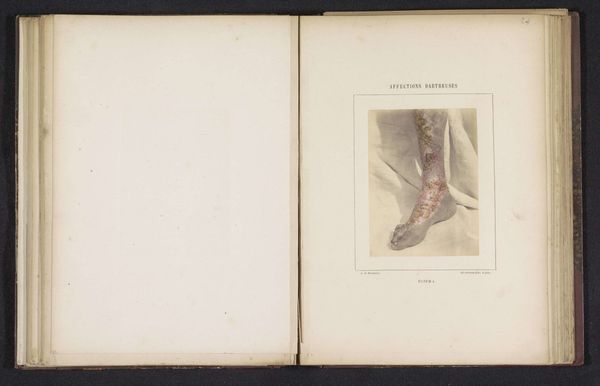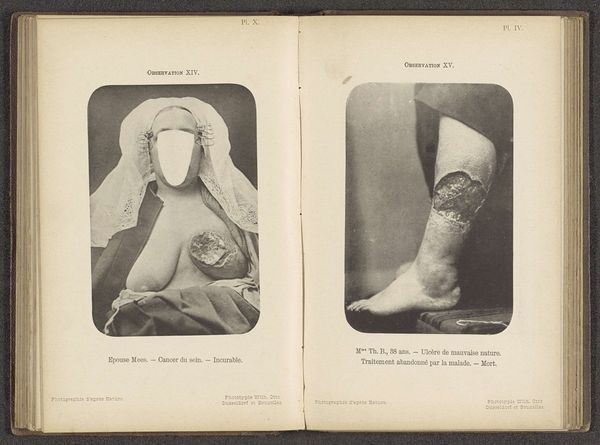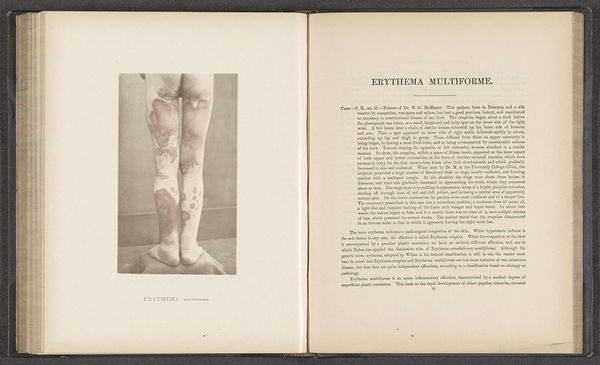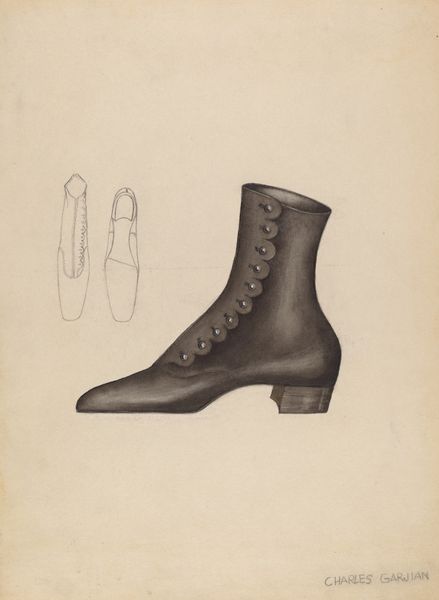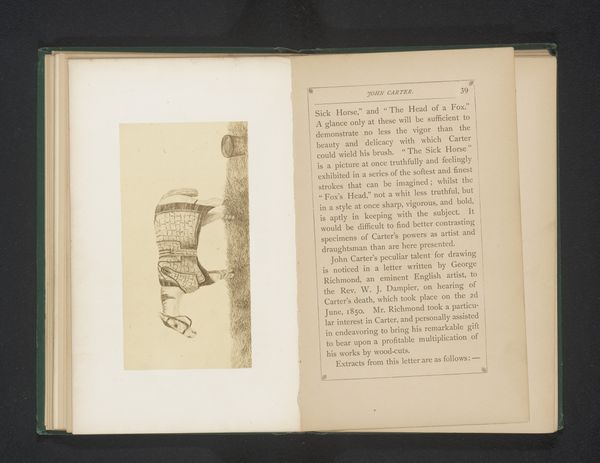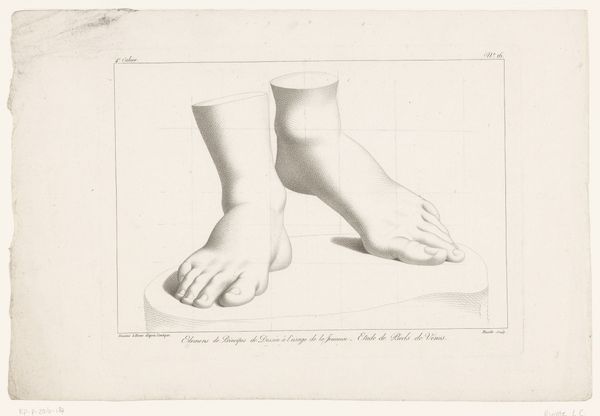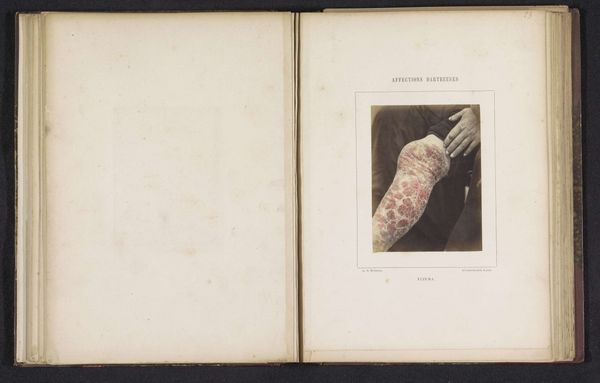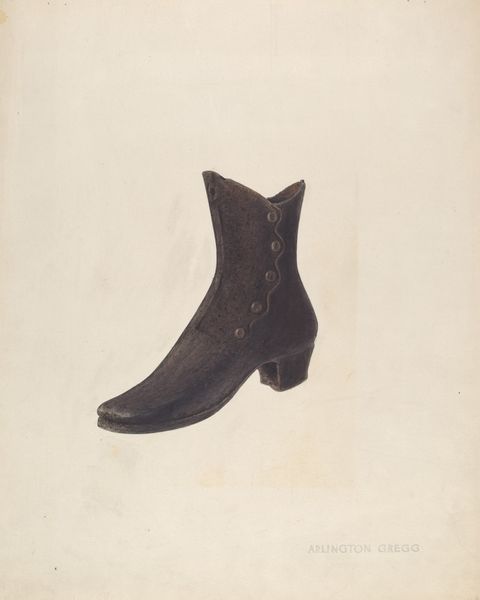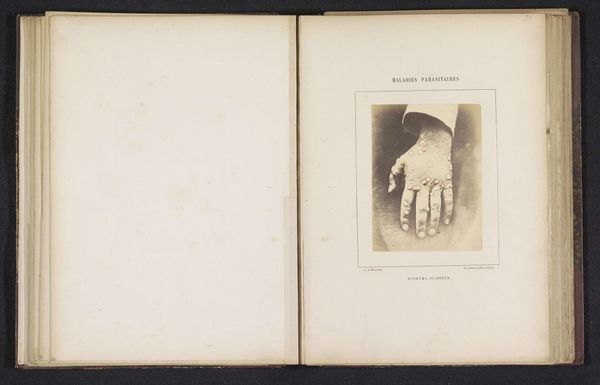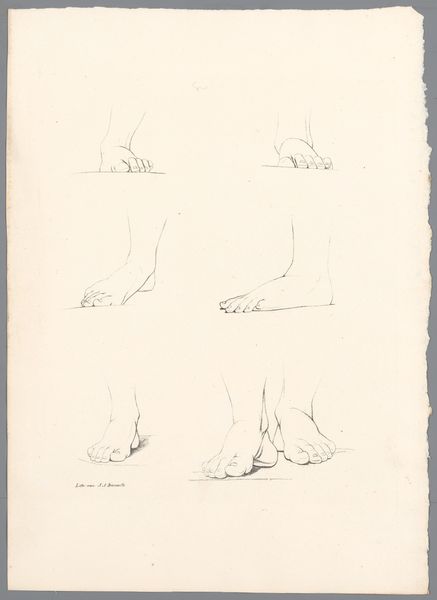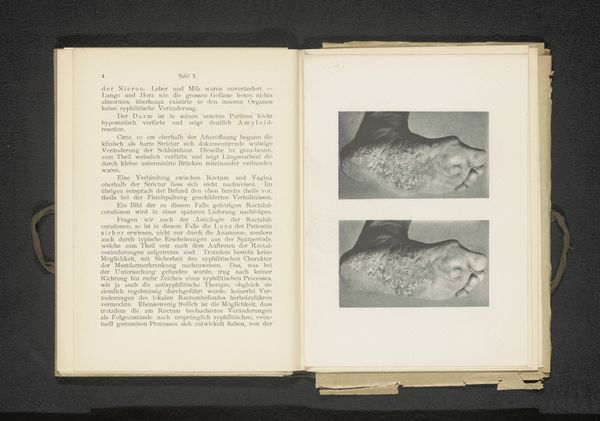
photography, gelatin-silver-print
#
portrait
#
photography
#
body-art
#
gelatin-silver-print
Dimensions: height 135 mm, width 90 mm
Copyright: Rijks Museum: Open Domain
Curator: Immediately striking, isn't it? The clinical precision…almost unsettling. Editor: Indeed. This image, a gelatin silver print dating from before 1884, titled "Scheenbeen met een geinfecteerde wond of chronische ontsteking," translates to "Shin with an infected wound or chronic inflammation." A rather direct depiction, to say the least. Curator: Direct, but also layered with meaning. Notice the arrangement of the three images within the larger photographic plate. The central image anchors the leg within an evident and shadowed medical frame, and creates both a sense of objectivity and a stark visual symbol. The foot faces toward an unseen context, weighted by gravity, pulling your gaze downward. Editor: I find it fascinating that we’re confronting what feels so private displayed almost bureaucratically in a book of images. The clinical nature raises many questions. What were the social conditions of medical practice and pedagogy at that moment? Were these used for training physicians, or perhaps for some emerging form of visual record-keeping? Curator: Absolutely. The image functions, then, not just as a record of the body's condition but also as a reflection of institutional power. Consider how the gaze is implicitly aligned with a medical authority – dictating how the human form is observed, categorized, and understood. The open wound becomes a focal point. In a pre-antibiotic era, chronic infection was far more common; the photograph may have served as a critical training tool for recognizing and managing these conditions. Editor: Thinking about symbols, even the monochrome palette impacts my viewing. Stripped of color, what might evoke repulsion in person instead holds a stark graphic intrigue, a certain distance to make viewing the progression less immediate to me as a contemporary viewer. But how did viewers at that time respond? Curator: I agree completely. The symbolic power comes, in part, from this translation into the photographic negative—an indirect realism filtered through technological means. Editor: Reflecting on this, I consider that "medical" documentation also became “cultural” artifacts. Curator: Exactly. A potent reminder of how social and cultural contexts shape the body, and how clinical depictions reveal deeply human stories.
Comments
No comments
Be the first to comment and join the conversation on the ultimate creative platform.
